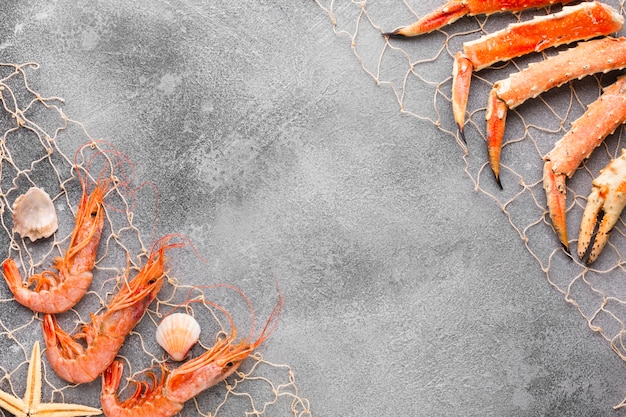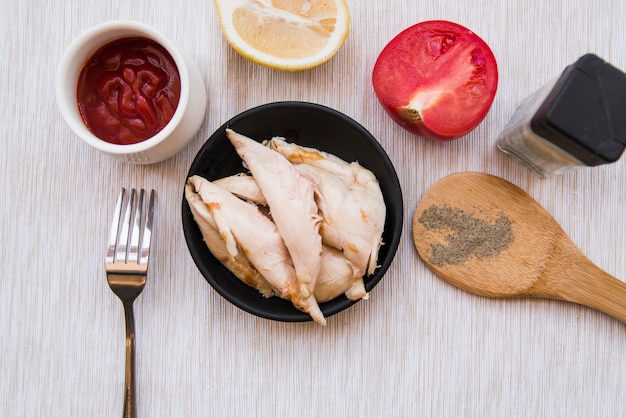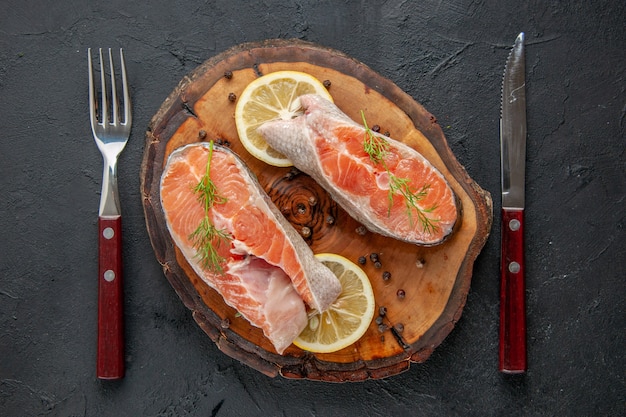There's nothing quite like the joy of a crab leg feast. The anticipation of cracking open those shells, the delightful aroma wafting through the air, the satisfying "snap" as the meat yields to your efforts – it's a culinary experience that's truly special. But when you're dealing with frozen crab legs, achieving that perfect texture and flavour can be a bit tricky. I've certainly had my share of disappointments, with dry, rubbery meat that didn't live up to the promise of a succulent feast. But through trial and error, I've learned the secrets to cooking frozen crab legs like a pro, ensuring every bite is bursting with flavour and tender, melt-in-your-mouth goodness. So, grab a comfy chair, a refreshing beverage, and let me guide you through my foolproof method for transforming those frozen beauties into a culinary masterpiece.
Part 1: The Crab Leg Selection - Picking the Perfect Prey

Choosing Your Crab Leg Champions: Alaskan King vs. Snow Crab
The first step to a perfect crab leg feast is choosing the right kind of crab. Now, I must confess, I have a deep-seated affection for alaskan king crab legs. Those colossal, majestic creatures offer a wealth of delicious meat, their size alone making them a statement piece on any table. But let's be realistic, sometimes the budget doesn't allow for such a grand feast. Fear not, for snow crab legs are a worthy contender. They may be a bit more petite, but they deliver an abundance of succulent meat, satisfying your cravings without breaking the bank.
Frozen or Fresh? The Ultimate Crab Leg Debate
Now, the great frozen vs. fresh crab leg debate rages on. Personally, I've found that frozen crab legs are just as delicious and convenient. Freezing doesn't compromise the flavour, and you're more likely to find consistently good quality frozen crab legs at your local supermarket. Plus, you can stock up and have them ready for a spontaneous crab leg extravaganza whenever the craving strikes.
Eyes on the Prize: Evaluating Quality
Remember, a good crab leg feast starts with a careful selection. When you're picking out your crab legs, take a moment to examine them. You want those beauties to be in top form, ready to deliver an explosion of flavour. Look for crab legs that are not discoloured or have any unpleasant odours. The meat should be firm and white, with no signs of discoloration or dryness. The shell should be intact, no cracks or breaks, indicating that the crab leg has been handled with care. Additionally, check the packaging for any signs of damage, frostbite, or freezer burn. It's all about ensuring the freshest, most delicious experience possible.
Part 2: The Art of Thawing: A Gentle Awakening for Your Crab Legs

The Wrong Way to Wake Up: Avoid the Sink
Let's be honest, you can't just throw a frozen crab leg into boiling water and expect it to cook evenly. It's like trying to wake a sleepy giant with a jolt - the exterior will be overcooked before the core even has a chance to thaw. So, take it slow, be patient, and let your crab legs awaken gently. The refrigerator is your best friend when it comes to thawing. It allows the crab legs to defrost slowly and evenly, ensuring a perfectly cooked outcome.
The Refrigerator: A Sanctuary for Slow Thawing
Give those frozen crab legs a luxurious retreat in the refrigerator for at least 12 hours, better yet, 24 hours. This allows the cold to gradually dissipate, resulting in a gentle, even thaw. You can also try thawing them in a cold water bath, but make sure to change the water every 30 minutes to maintain a consistently low temperature. Remember, the goal is to thaw those crab legs completely before you start cooking. Otherwise, you'll end up with unevenly cooked crab meat, a culinary tragedy we want to avoid at all costs.
Part 3: The Cooking Method: Unveiling the Majesty of Steaming

Steaming: A Culinary Symphony of Flavour and Texture
I've experimented with various cooking methods for crab legs, but steaming reigns supreme. It produces the most succulent, tender meat, preserving its natural sweetness and enhancing its delicate flavour. And let's not forget, steaming allows you to infuse the crab legs with aromatic herbs and spices, creating a symphony of flavours that will tantalise your senses.
Essential Tools for a Steaming Triumph
You'll need a large pot with a steamer basket. If you don't have a steamer basket, fear not, you can use a colander or even a metal bowl. Just make sure it's big enough to hold the crab legs without overcrowding them. We want those beauties to have ample space to steam evenly and release their full potential.
Mastering the Steaming Time: A timing guide for Perfection
The steaming time depends on the size of the crab legs. For smaller snow crab legs, 8-10 minutes should be sufficient. Those magnificent Alaskan king crab legs, however, may require a longer steam, 15-20 minutes. The key is to watch for signs of doneness: the meat should be opaque, no longer translucent, and the shell should turn a vibrant, bright red. It's a visual cue that the crab legs are perfectly cooked and ready to be devoured.
Part 4: Flavour Fusion: Infusing Your Crab Legs with Aromatic Magic
The Power of Flavour: Beyond the Basics
Who says crab legs have to be bland? We're aiming for a culinary masterpiece, a symphony of flavours that will dance on your taste buds! Steaming is the perfect method to infuse your crab legs with the most amazing aromas. Just add a few carefully selected ingredients to the steaming water, allowing their fragrant essence to seep into the crab meat.
Classic Combinations: Tried and True Flavour Blends
A simple blend of lemon juice, garlic, and bay leaves is a classic combination that delivers a fresh, zesty flavour. If you're feeling adventurous, try adding star anise, ginger, and lemongrass for an exotic twist. Fresh herbs like dill, parsley, and thyme can also add a touch of herbaceous magic. The possibilities are endless, so experiment and discover your own unique flavour combinations.
Salt: Enhancing the Natural Sweetness
Don't forget a pinch of salt in the steaming water. It enhances the natural sweetness of the crab meat, bringing out its delicate flavour. Don't be heavy-handed, a little goes a long way. Let the salt work its magic subtly, enhancing the natural goodness of the crab.
Part 5: Serving Time: A Presentation to Remember
The Grand Reveal: A Feast for the Eyes
Now, the moment of truth! Carefully lift those beautifully steamed crab legs out of the steamer basket and arrange them artfully on a platter. Don't forget to squeeze a lemon wedge over each crab leg, adding a bright, refreshing touch of acidity. For an extra touch of elegance, garnish with fresh herbs like parsley or dill. It's all about creating a visual feast that matches the culinary delight awaiting your guests.
Essential Tools: Cracking the Code
You'll need a good pair of crab crackers and a seafood fork to extract those juicy bits of crab meat from their shells. Don't be afraid to get messy, it's part of the fun! The satisfaction of cracking those shells open and revealing the tender, delicious meat is a truly rewarding experience.
side dishes: Completing the Culinary Ensemble
To elevate your crab leg feast, serve it with a side of melted butter for dipping. You can also add a touch of lemon juice and garlic to the butter for an extra layer of flavour. And let's not forget about classic side dishes that complement the crab's delicate flavour: corn on the cob, boiled potatoes, or a simple green salad. It's all about creating a balanced and harmonious culinary experience.
Part 6: The Crab Shell Symphony: Turning Leftovers into a Delicious Soup
Waste Not, Want Not: A Delicious Transformation
After you've enjoyed your feast, don't throw those empty crab shells away! They hold a treasure trove of flavour that can be transformed into a delicious crab shell soup. Simply simmer the shells in water with vegetables like carrots, celery, and onion, allowing the flavours to meld and create a rich, comforting broth. A touch of white wine and cream can add an extra layer of complexity and richness to the soup, transforming the humble crab shells into a culinary masterpiece. This is a great way to use up every last bit of those precious crab legs, turning leftovers into a delicious, nutritious treat.
Part 7: Storage and Leftovers: Preserving Your Culinary Treasure
Refrigeration: Keeping Your Crab Legs Fresh
If you have leftover crab legs, store them in the refrigerator for up to 3 days. Make sure to wrap them tightly in plastic wrap or aluminum foil to prevent them from drying out. This ensures that the crab meat stays moist and flavorful, ready for another delicious meal.
Freezing for Future Feasts: Preserving the Goodness
If you want to save your crab legs for a later date, you can freeze them for up to 3 months. Wrap them tightly in plastic wrap and then place them in a freezer-safe bag. This will help prevent freezer burn and maintain the quality of the crab meat. When you're ready to enjoy them, simply thaw them in the refrigerator overnight and then reheat them using your preferred method.
Reheating: Restoring the Deliciousness
You can reheat leftover crab legs in several ways. Steaming them again is a great option, preserving their moisture and flavour. You can also microwave them on low power for a few minutes, being careful not to overcook them. Another option is to bake them in a preheated oven at 350 degrees F (175 degrees C) for about 10 minutes. Just make sure not to overcook them, as this will make the meat tough and dry. Remember, the goal is to reheat the crab legs gently and preserve their deliciousness.
Part 8: FAQs: Addressing Common Crab Leg Conundrums
1. How do you tell if crab legs are bad?
If the crab legs have a fishy smell, or the meat is discoloured or slimy, it's best to throw them away. Also, check the packaging for any signs of damage or frostbite. These are all signs that the crab legs may not be fresh and could be unsafe to eat.
2. Can you eat the crab shell?
No, you shouldn't eat the crab shell. It's tough and chewy, and can be difficult to digest. However, you can use the shells to make a delicious crab shell soup, as mentioned earlier.
3. How long can you keep cooked crab legs in the fridge?
You can keep cooked crab legs in the fridge for up to 3 days. Just make sure to wrap them tightly in plastic wrap or aluminum foil to prevent them from drying out.
4. What happens if you overcook crab legs?
If you overcook crab legs, the meat will become tough and dry. It's better to err on the side of undercooked than overcooked. If you're not sure, you can always check the meat to see if it's opaque and the shell is a bright red. These are signs that the crab legs are cooked through.
5. Can you freeze cooked crab legs?
Yes, you can freeze cooked crab legs. Just make sure to wrap them tightly in plastic wrap and then place them in a freezer-safe bag. They can be stored in the freezer for up to 3 months.
Part 9: Final Thoughts: Embracing the Joy of a Delicious Crab Leg Feast
Cooking frozen crab legs doesn't have to be daunting. With a little practice and these tips, you can create a delicious, unforgettable feast. Remember to start with quality ingredients, thaw them properly, and cook them gently. Don't be afraid to experiment with different flavour combinations and let your creativity flow.
So, next time you're looking for a delicious and easy meal, grab some frozen crab legs and give this method a try. Your taste buds will thank you for it, and you'll be creating culinary memories that will last a lifetime.
Everyone is watching

How to Cook Frozen Lobster Tails Perfectly: A Step-by-Step Guide
RecipesLobster. Just the word conjures up images of lavish meals, special occasions, and a taste of luxury. But let's...

Pigs in a Blanket Cooking Time: How Long to Bake for Perfect Results
RecipesAh, pigs in a blanket. Just the name conjures up images of those delightful little parcels of crispy pastry en...

Pork Fillet Cooking Time: How Long to Cook It Perfectly
RecipesPork fillet, or tenderloin as it's sometimes called, is a real favourite in our house. It's so versatile, and...

The Ultimate Guide to Tender, Juicy Pulled Pork
RecipesRight, let's talk pulled pork. It's one of those dishes that just screams "comfort food," doesn't it? I mean...

The Ultimate Guide to Cooking Sweet Potatoes: From Roasting to Mashing
RecipesSweet potatoes. Just the name conjures up images of warm, comforting dishes, bursts of vibrant color, and a to...
